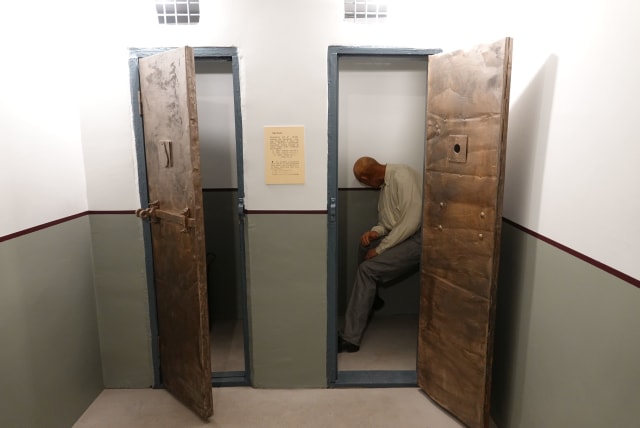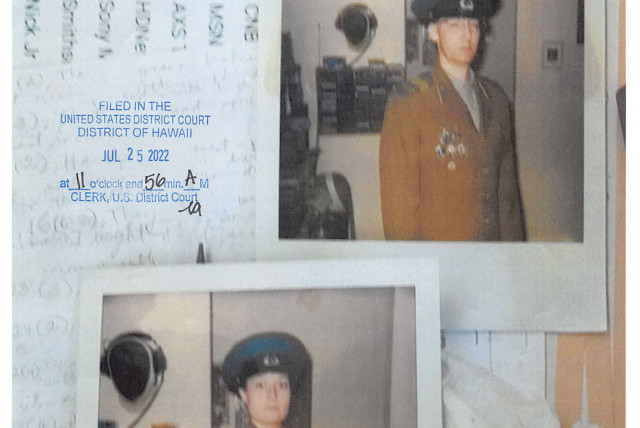Estonian spy museum - a Cold War relic

A trip back in time to visit the KGB days of the USSR.
TALLINN, Estonia – The sign on the museum door says in Estonian, “There is nothing here,” a contemporary joke about a meandering set of rooms atop what had once been the country’s most modern hotel. These were offices of the KGB, the “Committee for State Security”: the Soviet agency that spied on foreigners and Soviet citizens with equal suspicion, distrust and disdain.
The rooms are now a museum in the Viru Hotel, which still operates in the center of Tallinn, the nation’s charming and historic capital. The hotel has that blocklike, straining-for-modernity look that was emblematic of Soviet architecture of the Cold War but was global in reach. The Viru is now well run and convivial, but it had been completed in 1972 to house Western guests, giving the visitors a bit of comfort largely out of reach of native Estonians and a providing convenient place for the KGB to keep an eye on them.
Estonia is a small nation of 1.33 million inhabitants (that is fewer than San Diego). It borders the chilly Baltic Sea to the west and a glowering Russian Federation to the east. Like Ukraine, it had been invited into the Soviet Union and held there by force of arms. Around the capital now, many Ukrainian flags fly in Tallinn beside Estonian ones. Even though this country had been an unwilling part of the Soviet Union until the communist empire’s dissolution in 1991, and even though until then Russian was a required course in school, here’s a travel tip for your next visit: If you want to make friends in Tallinn, do not speak Russian.
Donations for Ukraine’s just and brave fight are eagerly encouraged.
To know why that is so, you should consider what it was like back in the day, and a visit to the KGB Museum is an elevator ride to a time machine. You can book your tour online or at the front desk of the hotel; it is a popular activity in Tallinn, so book ahead. I managed to snag a ticket two days in advance for the last tour in English before I had to leave for the airport.
My own group’s guide is a bespeckled, wry man who works as a teacher, a skill he says translates well into being a guide: “When they start whining,” he explains, “you know it is too late.”
A trip back in time to the USSR
His badge gives his name as Pavel. He notes it is not his real name – but all good spies need a cover story. With droll humor that echoes of the verbiage of Soviet days, he invites us to “storm the elevator.” We rise as high as it goes, and then we must walk up one flight to a floor that officially did not exist: the former home of the KGB surveillance office. There, Pavel asks us to “invade the room” and, following his introductory speech, he encourages us to “ask a provocative question.”
The museum contains a tall mannequin in one of those drag-you-to-the-Gulag green uniforms you see in spy movies. Large pieces of crumbling electronic equipment, some with gaps where modules went missing, are stacked and loosely shelved – as if the IT department’s holiday party had gotten out of hand. There is a hulking open-reel tape recorder and two forlorn, deflated-looking gas masks. “When the time came,” explains Pavel, “they left in a hurry.”
Pavel points to a bread plate in a display case of abandoned spy paraphernalia. “It has a slightly higher base than the others,” he explains. “The taller ones were bugged.” In the same case is a camera with a lens that could secretly shoot around corners. A small purse on view was used to keep hotel staff in line. It would be left in a corridor as if dropped by a Western hotel guest, meaning it surely contained cash that could be used at the hotel’s hard currency shop or anywhere else that Western banknotes (i.e., real money) bought goods or paid bribes.
If the finder should be tempted to open it for the presumed treasure, the purse would eject a spray of red paint, branding the communist staffer as a recidivist thief.
Spying in a workers’ paradise remains paradoxically a labor-intensive business. The hotel, which now has about 150 employees, had a staff of approximately 1,000 back when every guest was a suspect. There were about 450 rooms, and roughly 60 of them were “prepared,” meaning bugged. (In Poland at the time, the code word was that those were the “sunny” rooms.) They were typically given to visiting politicians, ambassadors, guides, priests, and reporters.
It is not as if Western guests were oblivious to all this. It was hard not to notice that a “babushka” (a grandmotherly Russian woman) sat in each hallway, writing down all comings and goings. On realizing he had no toilet paper in his room, one journalist simply shouted his complaint to the ceiling, and a babushka arrived within five minutes carrying a fresh roll.
Spies serving totalitarian states have historically pampered themselves whenever possible. These top-floor rooms are flanked by terraces that give broad, clear views of the city and the seaport. Back in the day, explains Pavel, Estonians were cautioned that, “Walking around the harbor is not recommended.” Translation: you could get detained for questioning for doing just that.
A modern bar now sits on one of the terraces, and a small chalkboard next to the bottles offers a fresh perspective on an old Baltic remedy for what troubles you. It reads in English, “Alcohol may not solve your problems but neither will water.”
We all thank Pavel for an entertaining and enlightening hour, and I am off to catch my flight to Oslo. At an airport shop selling Estonian crafts, I am asked one more time to donate money for Ukraine, which I gladly do. The KGB Museum helps you understand why Estonians are eager to show solidarity. Underpinning the easy grace with which they greet their guests is the resolve, for themselves and other former Soviet territories, to remain free from those who had overstayed their welcome from the moment they had marched in.
Jerusalem Post Store
`; document.getElementById("linkPremium").innerHTML = cont; var divWithLink = document.getElementById("premium-link"); if (divWithLink !== null && divWithLink !== 'undefined') { divWithLink.style.border = "solid 1px #cb0f3e"; divWithLink.style.textAlign = "center"; divWithLink.style.marginBottom = "15px"; divWithLink.style.marginTop = "15px"; divWithLink.style.width = "100%"; divWithLink.style.backgroundColor = "#122952"; divWithLink.style.color = "#ffffff"; divWithLink.style.lineHeight = "1.5"; } } (function (v, i) { });

